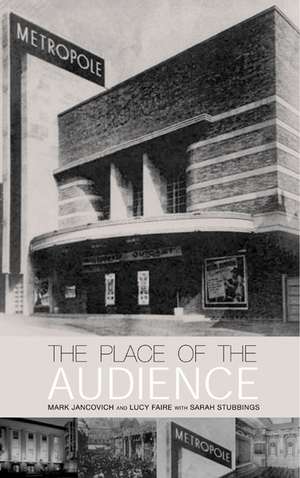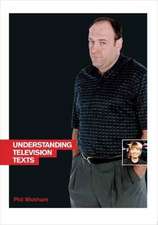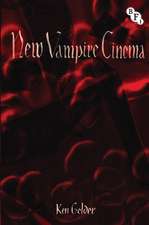The Place of the Audience: Cultural Geographies of Film Consumption
Autor Lucy Faire, Sarah Stubbingsen Limba Engleză Paperback – 28 apr 2003
Preț: 254.40 lei
Nou
Puncte Express: 382
Preț estimativ în valută:
48.68€ • 52.87$ • 40.90£
48.68€ • 52.87$ • 40.90£
Carte tipărită la comandă
Livrare economică 22 aprilie-06 mai
Preluare comenzi: 021 569.72.76
Specificații
ISBN-13: 9780851709420
ISBN-10: 0851709427
Pagini: 281
Dimensiuni: 155 x 235 x 19 mm
Greutate: 0.54 kg
Ediția:2003
Editura: British Film Institute
Colecția British Film Institute
Locul publicării:London, United Kingdom
ISBN-10: 0851709427
Pagini: 281
Dimensiuni: 155 x 235 x 19 mm
Greutate: 0.54 kg
Ediția:2003
Editura: British Film Institute
Colecția British Film Institute
Locul publicării:London, United Kingdom
Notă biografică
Dr
Mark
Jancovich
is
Reader
and
Director
of
the
Institute
of
Film
Studies
at
the
University
of
Nottingham.
Lucy
Faire
is
a
Research
Associate
in
the
Department
of
Geography
at
Loughborough
University.
Sarah
Stubbings
is
a
PhD
student
in
the
Institute
of
Film
Studies
at
the
University
of
Nottingham.
Textul de pe ultima copertă
It
has
been
a
recurring
complaint
both
within
and
against
film
studies
that
it
has
largely
ignored
the
activities
of
audiences.
This
book
aims
to
address
this
absence
(as
compared
to
television
studies)
and
to
explain
its
cause.
The
authors
argue
that
there
is
a
social
context
in
which
the
consumption
of
film
can
be
understood
or
studied
historically;
demonstrating
that
a
concentration
on
the
place
of
film
consumption
within
the
changing
cultural
politics
of
the
city
can
offer
a
compelling
and
productive
focus
of
analysis.
This
book
examines
not
only
the
different
meanings
of
different
sites
of
film
exhibition
and
distribution
(city-centre
cinemas,
local
cinemas,
art-house
cinemas,
multiplexes,
terrestrial
television
transmission,
video
rental
and
retail,
and
satellite/cable),
but
also
the
meanings
of
the
activities
of
film
consumption
associated
with
these
sites.
Through
use
of
archival
materials
and
ethnographic
studies
of
the
audience,
the
book
examines
the
meanings
of
film
consumption
from
the
earliest
film
showings
up
to
the
21st
century.










